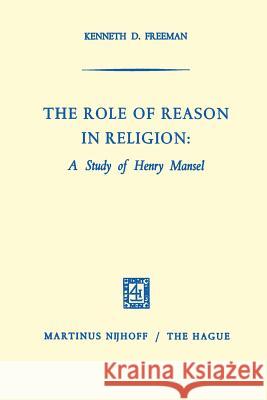The Role of Reason in Religion: A Study of Henry Mansel » książka
The Role of Reason in Religion: A Study of Henry Mansel
ISBN-13: 9789401504119 / Angielski / Miękka / 1969 / 127 str.
Henry Longueville Mansel published his Bampton Lectures in 1858, twenty seven years after Hegel's death and twelve years before the publication of Ritschl's Rechtfertigung und Versoehnung. The timing is significant. As a sweeping critique of liberalism, frequently symbolized by the work of Hegel, the lectures react to the slow but inexorable permeation of English religious thought by German ways of thinking. By 1858, the process was sufficiently widespread that Mansel felt justified in devoting the principal portion of his work to the attack. Ritschl marks the effective end of Hegel's direct influence on theology and a return to a more Kantian mode of thinking. His gambit had already been made, for Mansel is in many ways a more cautious version of Ritschl. Mansel, however, wrote in English and had the misfortune to say what he did at the beginning of a movement so strong that it allowed no quali fication. Thus Mansel's thought was rarely accepted. He was certainly not ignored, at least at the time. The lectures, entitled "The Limits of Religious Thought," were an immediate sensation. They were quickly reprinted both on the Continent and in America and went through two editions in 1858, two more in 1859, and a fifth in 1867. For a period they became "almost a textbook in the schools of the University. " 1 Few leading divines of the day were silent and fewer yet were neutral."











